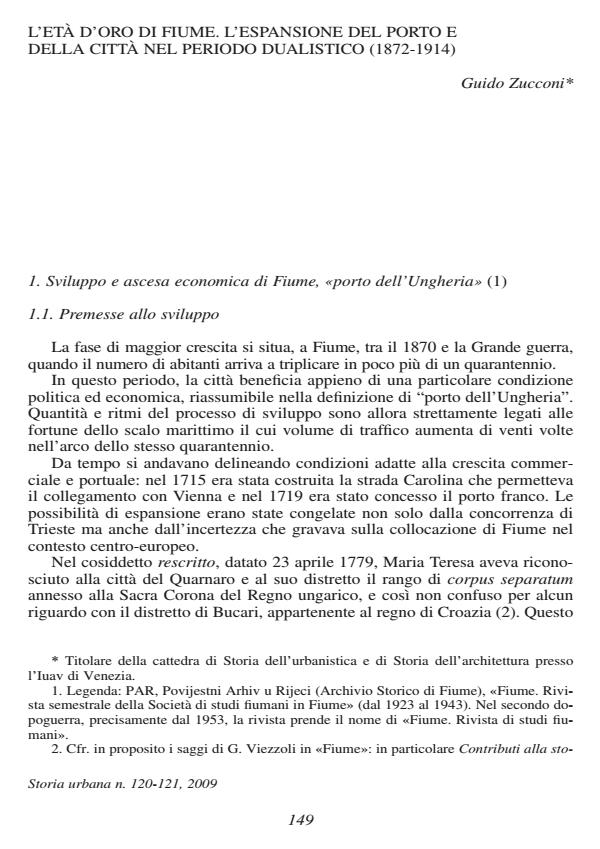L'età d'oro di Fiume. L'espansione del porto e della città nel periodo dualistico (1872-1914)
Journal title STORIA URBANA
Author/s Guido Zucconi
Publishing Year 2009 Issue 2008/120
Language Italian Pages 16 P. 149-164 File size 3298 KB
DOI 10.3280/SU2008-120007
DOI is like a bar code for intellectual property: to have more infomation
click here
Below, you can see the article first page
If you want to buy this article in PDF format, you can do it, following the instructions to buy download credits

FrancoAngeli is member of Publishers International Linking Association, Inc (PILA), a not-for-profit association which run the CrossRef service enabling links to and from online scholarly content.
The golden age of Fiume: Urban and Maritime Expansion in the "Dualist" Period (1872-1914) - There is no better symbol of the strivings of Fiume’s cosmopolitan ruling class than the waterfront in the so-called dualistic period (1872-1914), its "Golden Age". Although Fiume started out with a small population and volume of trade, it was able to exploit the opening of new trading routes in the Mediterranean Sea as well as new rail connections. The Suez Canal had been opened and Fiume was chosen as the "port of Hungary". Thus a new harbor was created and linked through new railroad connection to Croatia and Hungary inland. Mayor Ciotta played a leading role in this climate of economic upheaval during his twenty-year tenure. Fiume’s architecture can serve as an index of Fiume’s transition from small to large scale and from a local to an international perspective. We can see this in the waterfront blocks - the residential buildings, the company headquarters, and the public buildings, such as the new grand Opera theatre, all of which epitomize the passage into a new urban panorama.
Guido Zucconi, L'età d'oro di Fiume. L'espansione del porto e della città nel periodo dualistico (1872-1914) in "STORIA URBANA " 120/2008, pp 149-164, DOI: 10.3280/SU2008-120007